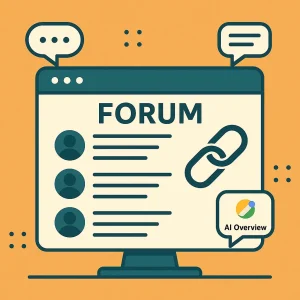
SaaS Link Building Playbook for Faster SEO Wins
Learn proven SaaS link building tactics to rank faster, boost DR, and drive signups with high-quality backlinks.
Heard SEO pros mention “link wheels” and wondered if they’re still a thing?
You’re not alone—and this guide clears up the confusion fast.
Whether you’re a SaaS marketer, content strategist, or affiliate site owner, understanding how link wheels used to work (and why they now hurt you) is essential for long-term SEO success.
We’ll break down the structure, step-by-step creation, real risks, and smarter modern alternatives—so you can focus on strategies that actually move rankings today.

A link wheel is a closed-loop backlink strategy where a group of websites or Web 2.0 properties link to each other and the central “money site.”
Each site links to the next (in a loop), and all link back to the main website to funnel link juice and pass authority. Think of it like a wheel: the money site is the hub, and the spokes are interlinked blog properties.
This approach gained popularity during the early 2010s when Google’s algorithm heavily favored link quantity over link quality.
Back then, SEOs used platforms like Blogger, WordPress.com, Weebly, and LiveJournal to create low-effort satellite blogs that pointed backlinks to the main domain.
But here’s the catch: all the control lies with the creator. Since you build and manage every property, the link wheel lacks authenticity—something today’s Google algorithms penalize.
Visualize it this way:
Site A → Site B → Site C → Site D → Site A (loop)
Each of them → Money Site.
Today, Google’s link spam update can easily detect and devalue this tactic.
Back in the early days of SEO, link wheels actually worked.
They were easy to set up, gave predictable PageRank boosts, and kept full control in your hands.
You didn’t need to pitch bloggers or create high-quality content—you just spun up a few Web 2.0s and linked them in a loop.
Many SEOs believed that quantity alone could outrank quality. As long as backlinks existed, search engines responded—at least temporarily.
This also aligned with early misconceptions about TrustRank, where any link (even low-value ones) was thought to increase your trust score.
But Google quickly adapted, and link wheels began triggering penalties instead of rankings.
This could be your homepage, landing page, or product feature. The key is to funnel all link equity here.
Example:
You run a project management SaaS—your goal is to rank its feature comparison page.
Set up accounts on Blogger, Medium, WordPress.com, Wix, and Tumblr. Ensure each looks like a real blog, not a link farm.
Example:
You create five distinct blogs around “remote work,” each linking subtly to your main SaaS tool.
Write niche-relevant posts (500–700 words). Include 1 contextual link to the next blog and one to the main site.
Example:
Each blog covers a remote team tip, linking to the next blog + your product demo.
A links to B → B to C → C to D → D to A. This forms the wheel structure, giving the illusion of a web of endorsement.
Every satellite also links to the money site using varying anchor texts.
Link wheels scream “manipulation.” They’re on-par with PBNs—Google will nuke them once spotted.
Manual actions or algorithmic penalties can remove you from SERPs overnight.
Example:
A niche product review site saw a 90% drop after its link wheel triggered a manual action.
Sites in the wheel rarely generate traffic, social shares, or engagement—making the links practically useless.
Web 2.0s used solely for backlinks are often purged during Google updates.
Example:
A Shopify dropshipper used a wheel and lost 3 of 5 satellite blogs to deindexation—tankings followed.
Example:
A digital marketing agency ran wheels on 10 client sites. Two months later, 8 clients dropped off Page 1.
1. Guest Posting on Niche-Relevant Blogs
This is still one of the most effective ways to earn contextual backlinks.
Example:
A SaaS CRM landed a link from Zapier’s blog by contributing a guide on “workflow automation.”
2. HARO & Digital PR
Journalists love sourcing quotes from niche experts. Respond consistently and build your profile.
Example:
A D2C skincare brand scored links from Cosmopolitan and Healthline via smart HARO replies.
3. Link Insertions in Aged Content
Updating high-performing content with fresh insights gives bloggers a reason to link to you.
Example:
An AI content tool offered new stats to a marketing blog, landing a DA70+ link in an old listicle.
4. Manual Blogger Outreach
Not spammy mass emails—real relationship building that gets you into curated content.
Example:
A product-led SEO agency shared a SaaS case study, earning backlinks from 3 niche marketing blogs.
✅ Modern methods build trust, pass long-term value, and won’t tank your site after an update.
Let’s be honest—there are rare edge cases.
If you’re experimenting with black-hat SEO, testing short-term ranking boosts, or building churn-and-burn sites, a link wheel might temporarily work.
Same goes for targeting ultra-low-competition keywords where algorithm scrutiny is minimal.
But for any serious SaaS, ecommerce, or authority site—don’t risk it.
Instead, spend that time earning legitimate links that stick.
Link wheels are an outdated SEO shortcut that simply doesn’t belong in modern strategies.
Their short-term gains come at the cost of long-term pain—penalties, deindexation, and lost trust.
If you’re focused on sustainable growth, stick with link building that aligns with Google’s guidelines and actually builds your brand.
✅ Link-Building Checklist
📥 Grab Our Value Outreach Templates
Skip guesswork—use outreach email templates that earned 60+ DR50+ links for SaaS.

Learn proven SaaS link building tactics to rank faster, boost DR, and drive signups with high-quality backlinks.

Learn how to pick a trusted white label link partner for your SaaS agency. Avoid spammy links and scale SEO growth.

Uncover the real value of forum backlinks in 2025—learn smart strategies, avoid risks, and build SEO trust effectively.
